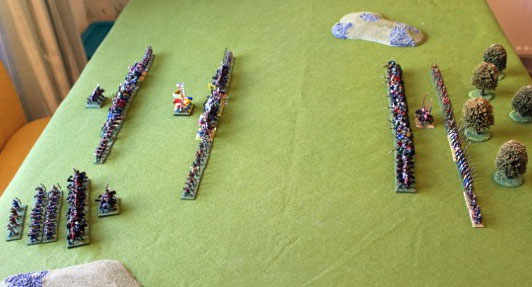- Home
- About
-
Travel
-
Features
- Dyrrachion1081
- Normans in the Balkans
- Manolada 1316
- Kosovo 1389
- Castles on the Danube
- Late Medieval Bosnian Army
- Doboj 1415
- Wallachian and Moldovan troops of the Napoleonic wars
- Anchialos 917
- Slovenian Borderlands
- The Zadruga and the Military Border
- Cretan War in the Adriatic
- Salonika 1916
- Uskoks of Senj
- Siege of Klis 1537
- Eugene in the Balkans
- Moldavian Surprise 1711
- Austro-Turkish War 1737-9
- Militargrenze
- Invading Ottoman Turkey
- Siege of Ragusa 1814
- Russo-Turkish War 1806-12
- Serbian Uprising 1815
- Ali Pasha
- Ottoman Army 1826
- Aleksinac 1876
- Shipka Pass
- Slivnitsa 1885
- Romanian Army 1878
- Austrian forts 19thC
- Kumanovo 1912
- Catalca Lines
- Adrianople 1912-13
- Kajmakcalan 1916
- The other 1918 campaign
- Macedonia air war WW1
- War of the Stray Dog
- Royal Yugoslavian armed forces
- Blunder in the Mountains
- Romanian SS
- Gebirgsjager in the Balkans
- Knights Move 1944
- Vis during WW2
- HLI in the Adriatic
- Adriatic Cruel Seas
- Dalmatian Bridgehead
- Cyprus 1974
- Transnistrian War
- Ottoman Navy Napoleonic wars
- Medieval Balkans
- Balkan lockdown quiz >
- Reviews
-
Armies
- Ancient Greeks
- Pyrrhic army of Epirus
- Dacian wars
- Goths
- Late Roman
- Comnenan Byzantine Army
- Normans
- Serbian medieval
- Albanian medieval
- Wallachian medieval
- Bosnian Medieval
- Catalan Company
- Polish 17C
- Austrian Imperialist
- Ottoman
- Austrian 18thC
- Russian Early 18thC
- Ottoman Napoleonic
- Greek Revolution
- 1848 Hungarian Revolution
- Russian Crimean war
- Romanian Army of 1877
- Ottoman 1877
- Russian 1877
- Balkan Wars 1912-13
- Macedonia WW1
- Greece WW2
- Italian Army WW2
- Gebirgsjager WW2
- Hungary WW2
- Turkey WW2
- Soviet Union WW2
- Bulgaria WW2
- Turkish Korean War Brigade
- Balkan Wars 1990s
- Links
- Books
|
Introduction
One of a number of interesting Balkan anniversaries this year is the Battle of Manolada. It was fought on July 5, 1316 at Manolada, on the plains of Elis in the Peloponnese region of Greece. Prelude The Angevins of the Kingdom of Naples had inherited the Principality of Achaea upon the death of William II Villehardouin in 1278 and transferred their rights to Louis of Burgundy in 1313. Ferdinand of Majoroca who claimed the title by marriage contested this. In June 1315, Ferdinand landed near the port city of Glarentza, and proceeded to conquer the plain of Elis, including Andravida, the capital of the Principality. Louis' wife, Matilda of Hainaut, then arrived ahead of her husband who was seeking Venetian support and secured the support of a number of local lords. Ferdinand successfully engaged Margaret’s forces at the Battle of Picotin in February 1316. Louis finally arrived in the Principality just after the battle with a Venetian fleet and he moved to Patras, where Byzantine forces sent by the governor of Mistra reinforced his troops. Ferdinand was also expecting reinforcements from the notorious Catalans in the Duchy of Athens and from Majorca, but rather than retreat and join up with his allies, he decided to give battle. Battle We know little about the armies other than it appears Ferdinand was heavily outnumbered, making it even stranger to justify not withdrawing. Ferdinand’s confidence may have been down to the quality of his troops. Feudal cavalry of Achaea was reckoned by contemporaries to be the very best and together with his Spanish knights he had a force of 500 cavalry. Lighter armoured Greek cavalry together with Slav and Greek infantry spearmen, javelinmen and archers would supplement them. He also had a force of Spanish foot. He had more infantry, possibly as many as 1000 foot. There was also a small force of military order knights, including the Teutonic knights, but it is not known if they fought at Manolada and if so for what side. Louis’s army consisted of French, Burgundian and Achaean men-at-arms, probably supported by crossbowmen. I addition there were 2,000 Moreote Byzantines from Mistra. These would have been armoured cavalry, not as heavy as men-at-arms and foot archers Ferdinand formed his troops in a forest, but was forced into the open when Louis’s troops burned the trees. The Majorcan troops then charged with around 500 cavalry that broke the first Burgundian line; commanded by John Orsini, count of Cephalonia. The second line, commanded by Louis, defeated the Majorcan charge, and Ferdinand was dismounted and inadvertently slain before he could be taken prisoner. In ‘The Chronicle of the Morea’, Mutander wrote: “He was the most accomplished knight, and the bravest of any King’s son in the world, and the most upright and wisest in all of his acts”. His ‘wisdom’ in attacking an army three times larger must be questionable at least! The loss of their commander resulted in the collapse of the Majorcan army, and they fled towards Glarentza. The Catalans on hearing of the defeat returned to Athens. Aftermath Louis didn’t enjoy the fruits of his victory. He was dead by October, probably poisoned by Orsini. There were a number of planned campaigns by his successors, but the Byzantines gradually recovered most of the Morea, before succumbing to the Ottomans. Further Reading Only snippets about the battle I’m afraid, but these provide a better understanding of the period: In Crusader Greece – Eric Forbes-Boyd The Franks in the Aegean 1204-1500 – Peter Lock The Late Byzantine Army 1204-1453 – Mark Bartusis The Late Medieval Balkans – John Fine Armies of the Middle Ages V2 – Ian Heath History of the Fourteenth and Fifteenth Centuries - Hazard http://digicoll.library.wisc.edu/cgi-bin/History/History-idx?type=div&did=History.CrusThree.i0016&isize=M Chronicle of Mutander http://www.yorku.ca/inpar/muntaner_goodenough.pdf The church at which Ferdinand preyed before the battle is still standing http://surprisedbytime.blogspot.co.uk/2012/07/church-at-manolada.html |
|








